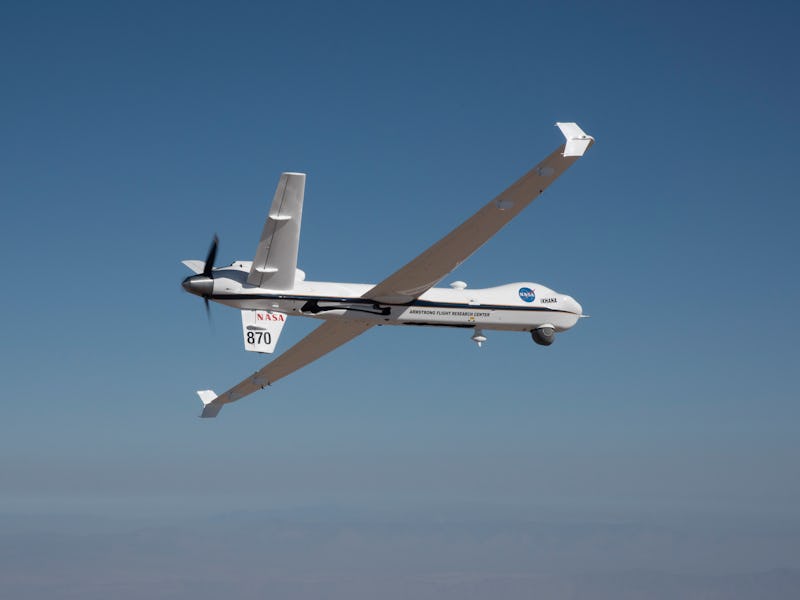NASA's Uncrewed Airplane Makes Its First Historic Flight
The breakthrough could pave the way for other drone uses.

NASA has been flying unmanned aircraft for a while, but until now they’ve needed chase planes, sort of like autonomous flight training wheels that act as the aircraft’s “eyes” to avoid collisions. That all changed on Tuesday, when NASA took the training wheels off, successfully flying an unmanned aircraft through public airspace for the first time. It’s a breakthrough step toward a number of humanitarian use cases like fighting forest fires or working search and rescue operations.
“This is a huge milestone,” said Ed Waggoner, NASA’s integrated aviation systems program director. “We worked closely with our Federal Aviation Administration colleagues for several months to ensure we met all their requirements to make this initial flight happen.”
The successful test of the technology paves the way for far more ambitious uses for unmanned vehicles. Companies like DelivAir and Amazon have detailed plans to use drones to deliver packages to customers. Facebook CEO Mark Zuckerberg announced in June 2017 that the company had completed a successful trial of the “Aquila” internet drone prototype, paving the way for planes beaming network access to the most remote regions.
What Is the Ikhana Aircraft and How Does it Work?
The Ikhana aircraft in NASA’s recent flight uses detect and avoid technologies to mitigate the need for a chase plane surveying its operations. These included a Honeywell Traffic Alert and Collision Avoidance System, an airborne radar, and a special broadcast surveillance capability where the plane calculates its location with satellite navigation and shares the information so other aircrafts can move accordingly.
The FAA has a number of restrictive requirements on how these unmanned aircraft operate. NASA received clearance on March 30 from the agency for special permission so Ikhana could test out these new technologies in full.
NASA airplane gearing up for takeoff.
The plane took off from the Armstrong Flight Research Center in Edwards, California, and entered controlled airspace almost immediately. It entered the same class of airspace normally reserved for commercial airlines, around 20,000 feet high, turning north toward Fresno before heading south to Victorville before descending into general aviation airspace 10,000 feet high. The test, which saw the plane transfer air traffic control to various centers, was a success.
“We are flying with a suite of sophisticated technology that greatly enhances the safety capabilities of pilots flying large unmanned aircraft in the National Airspace System,” said Scott Howe, Armstrong test pilot. “We took the time to mitigate the risks and to ensure that we, as a program, were prepared for this flight.”